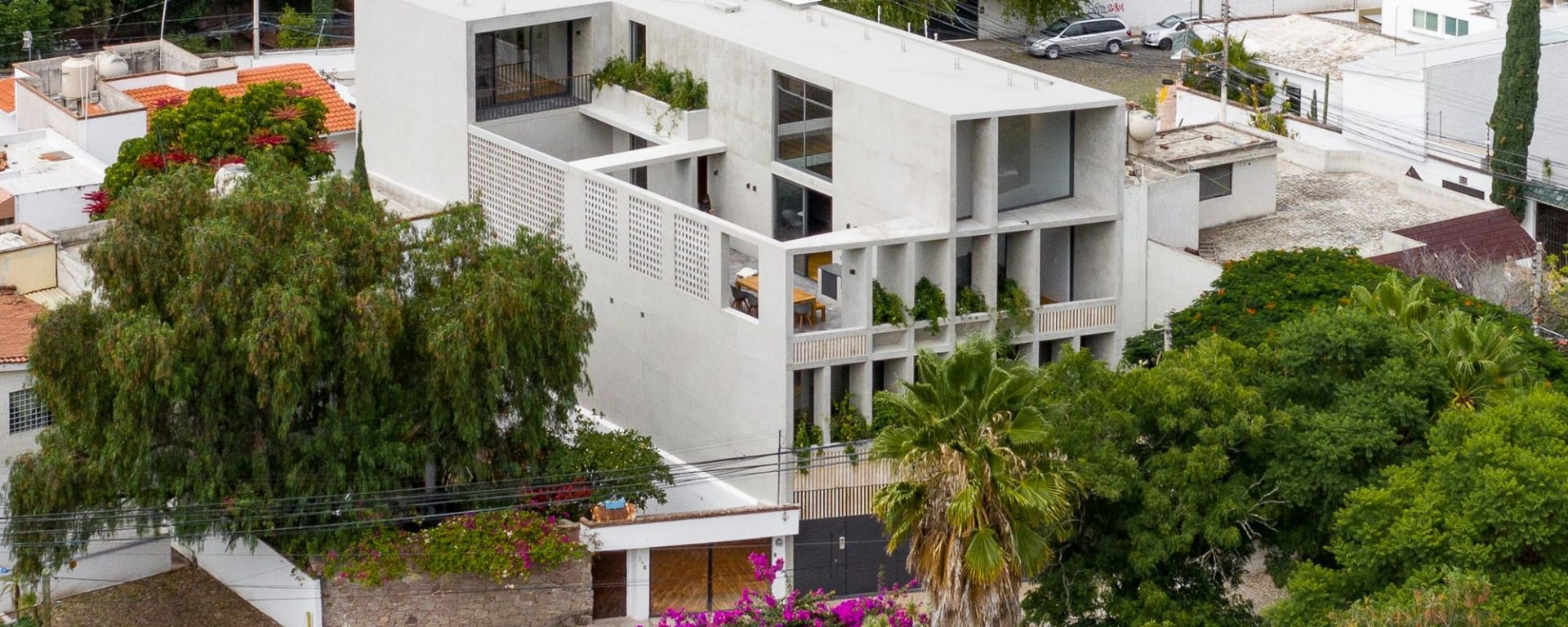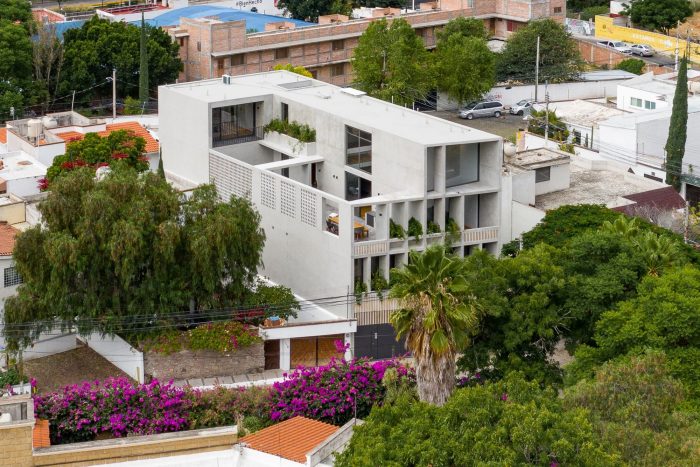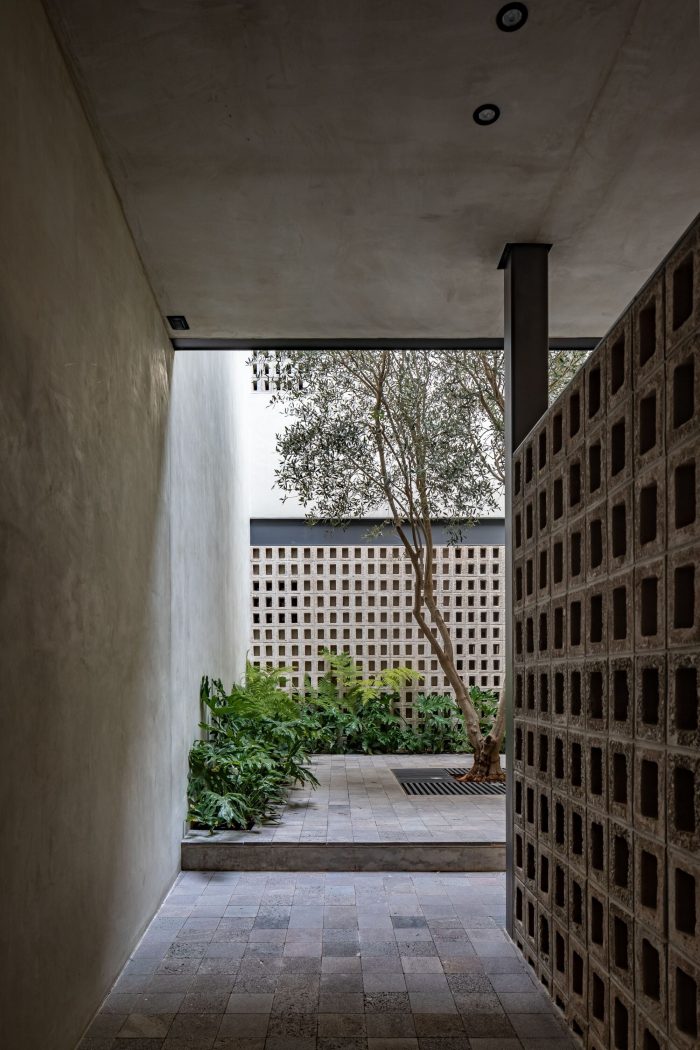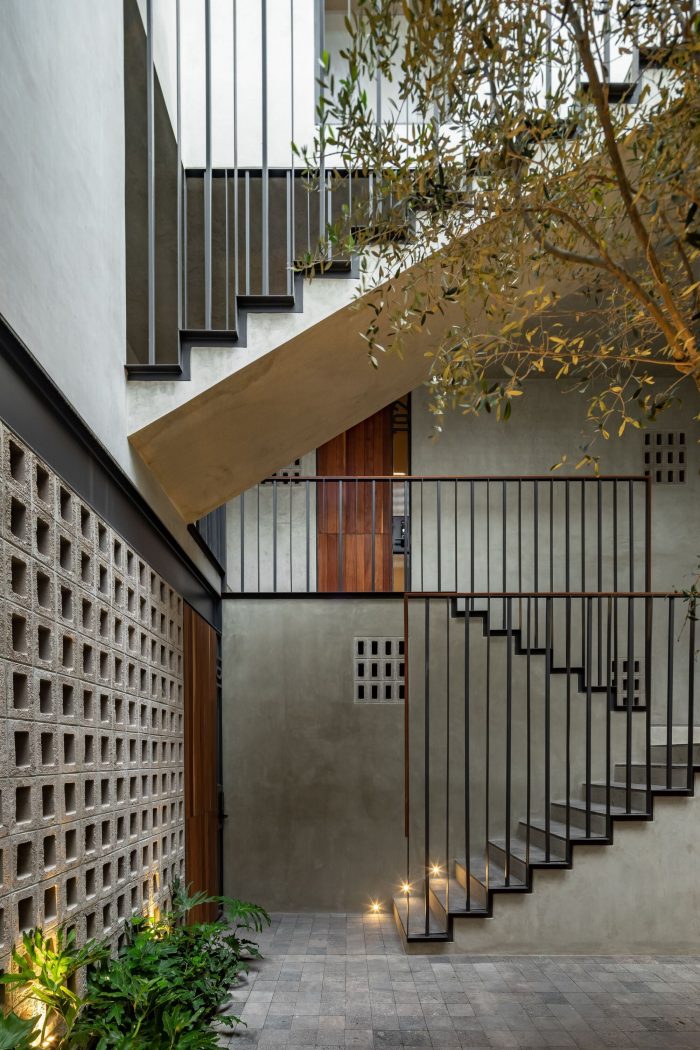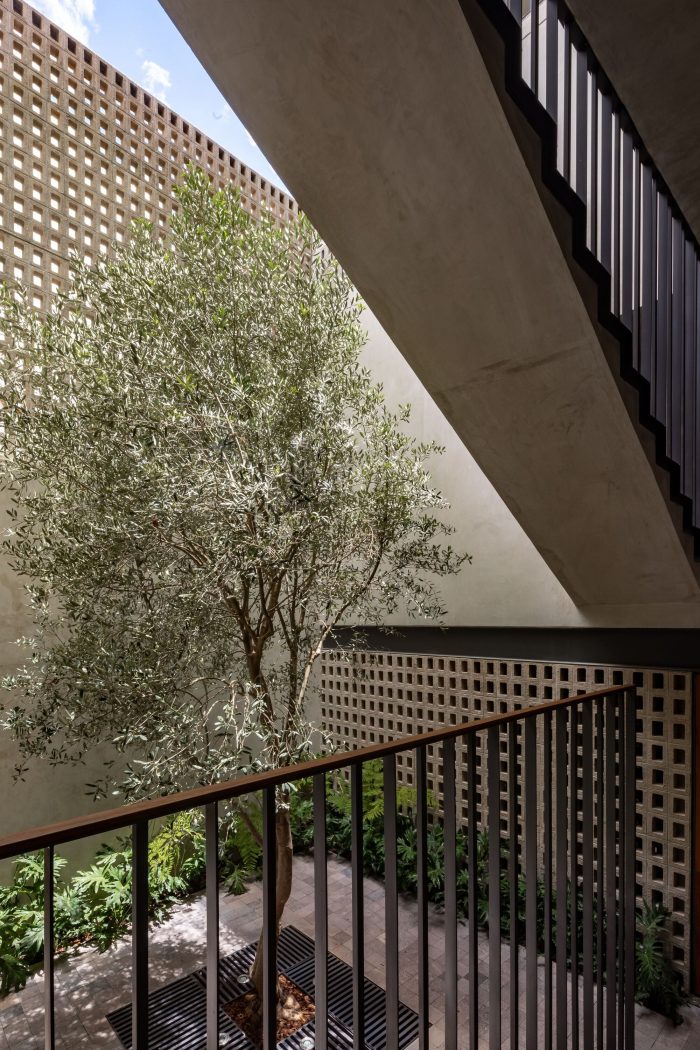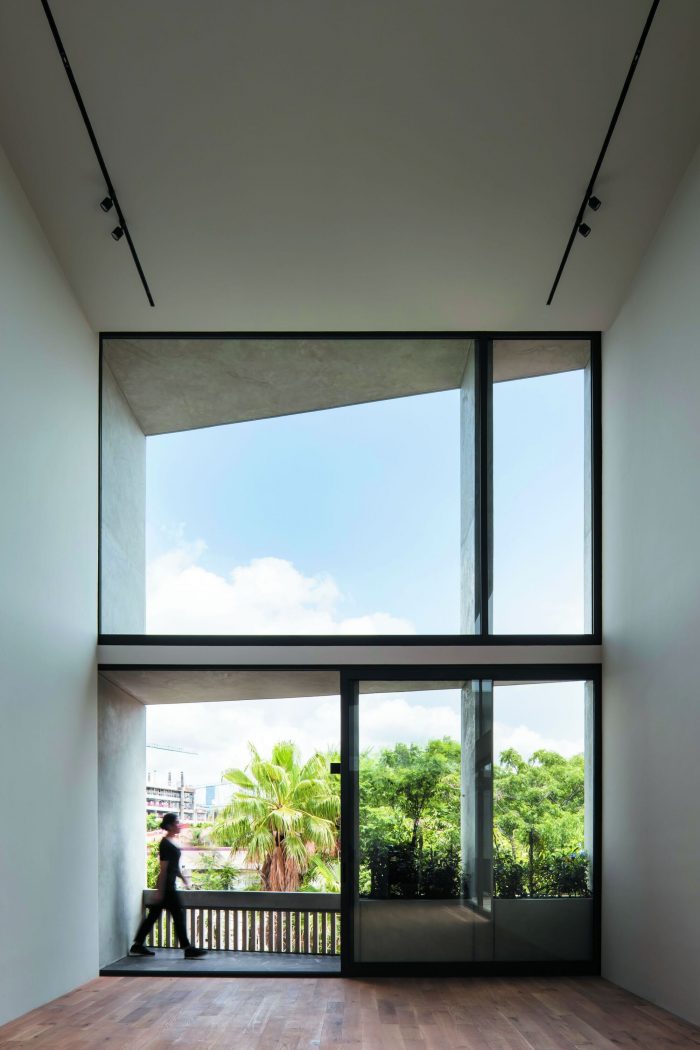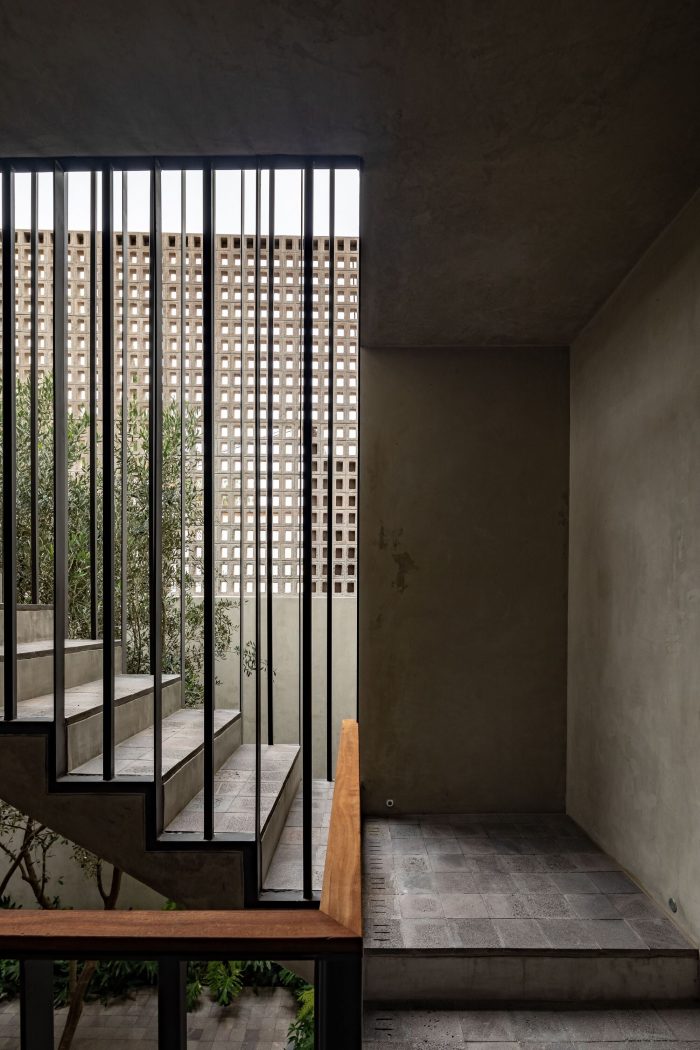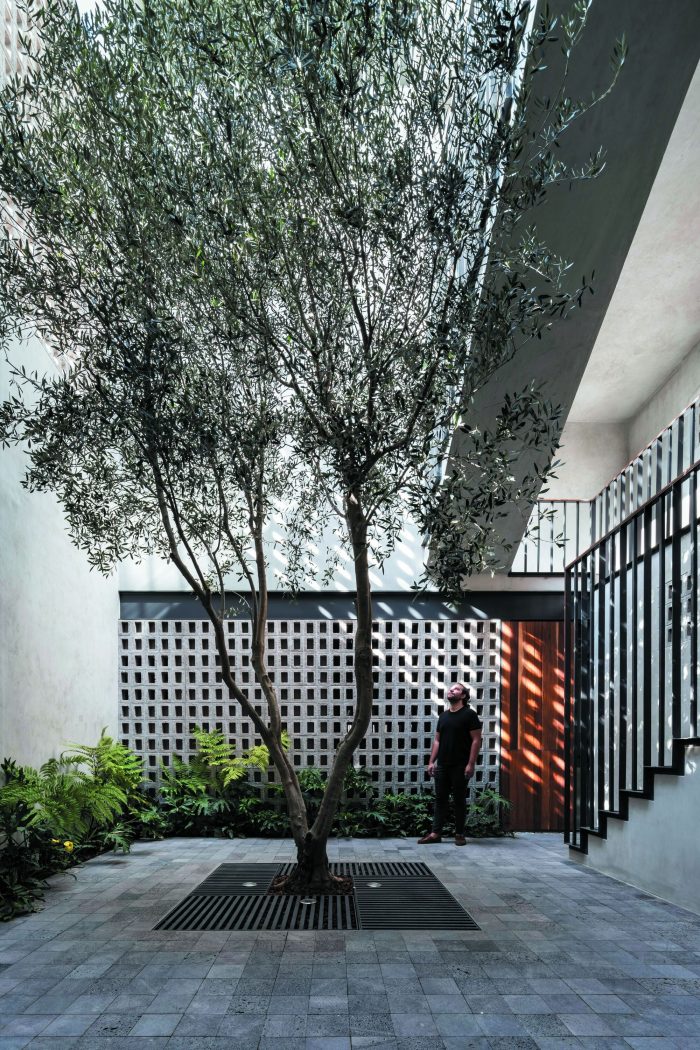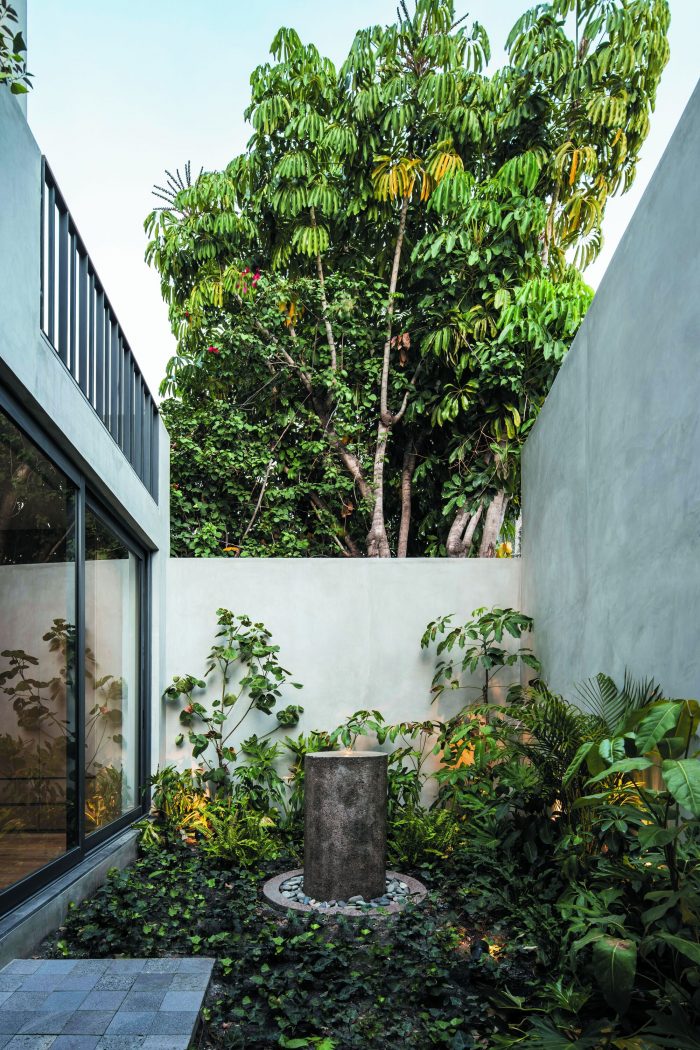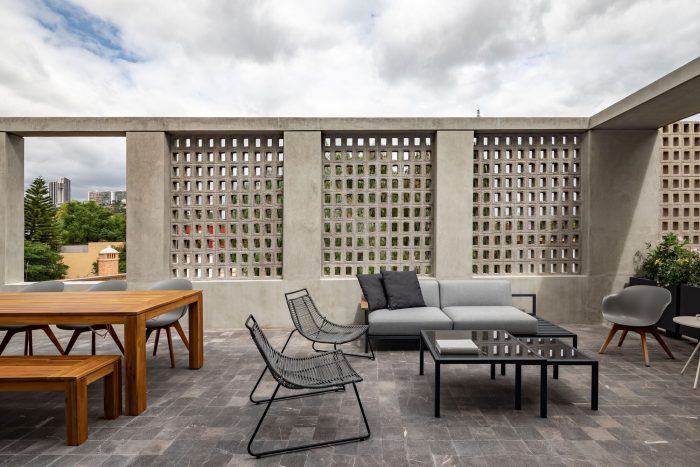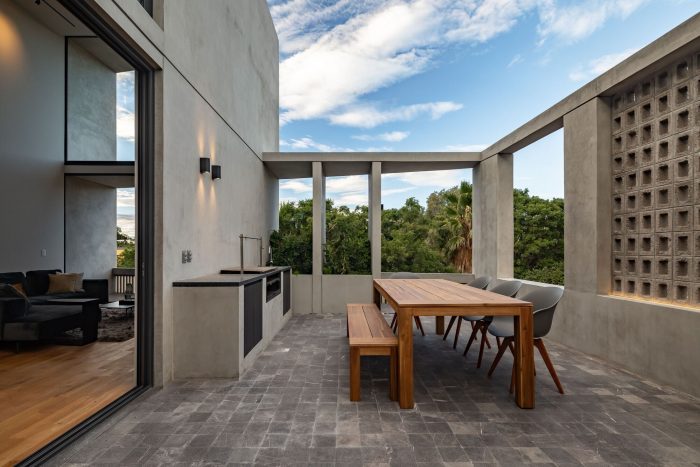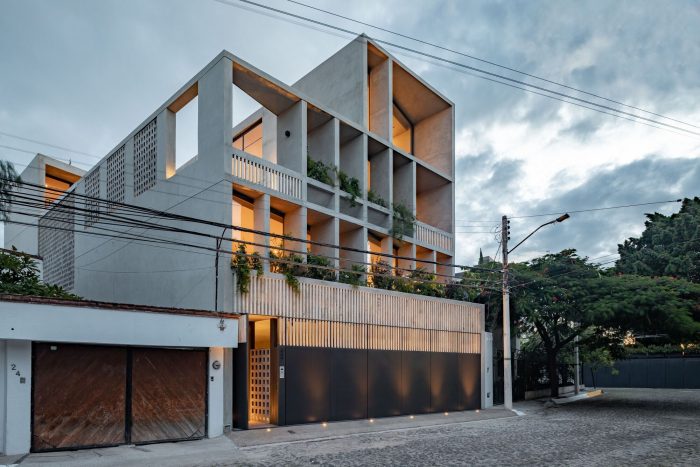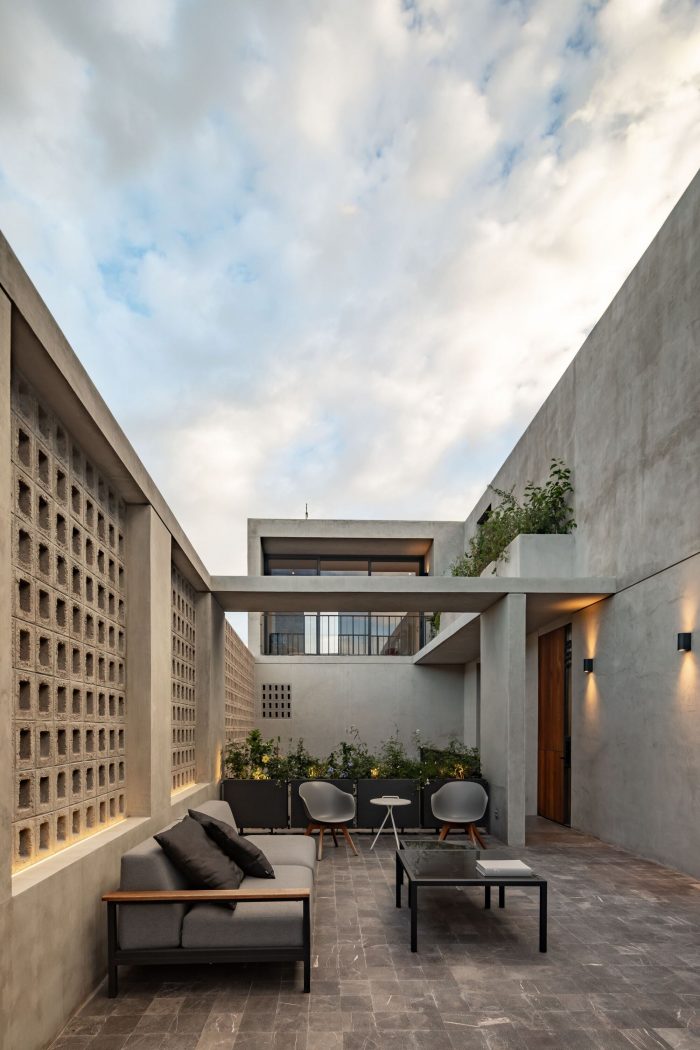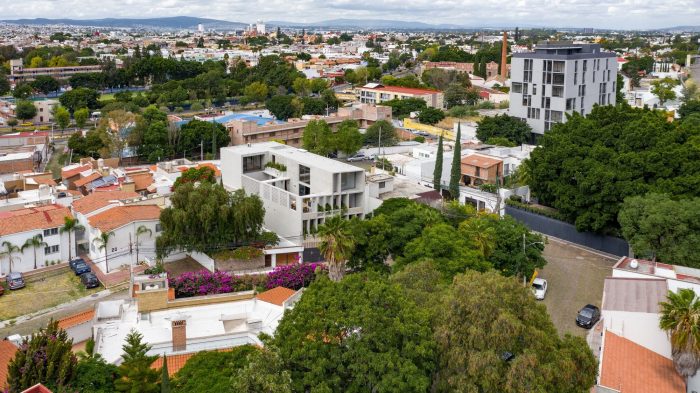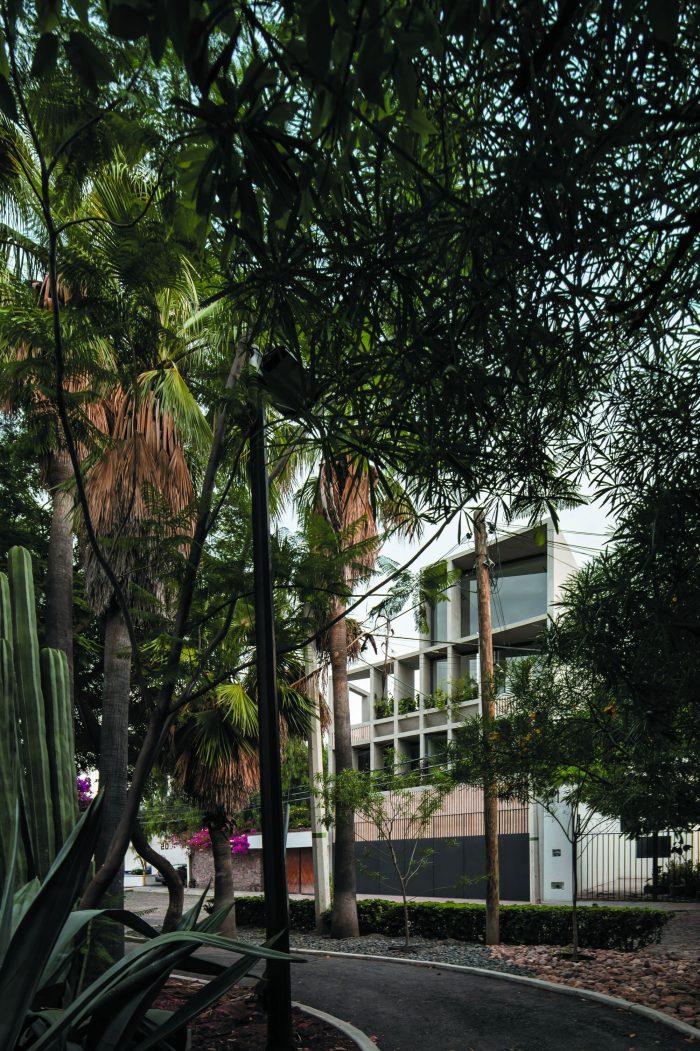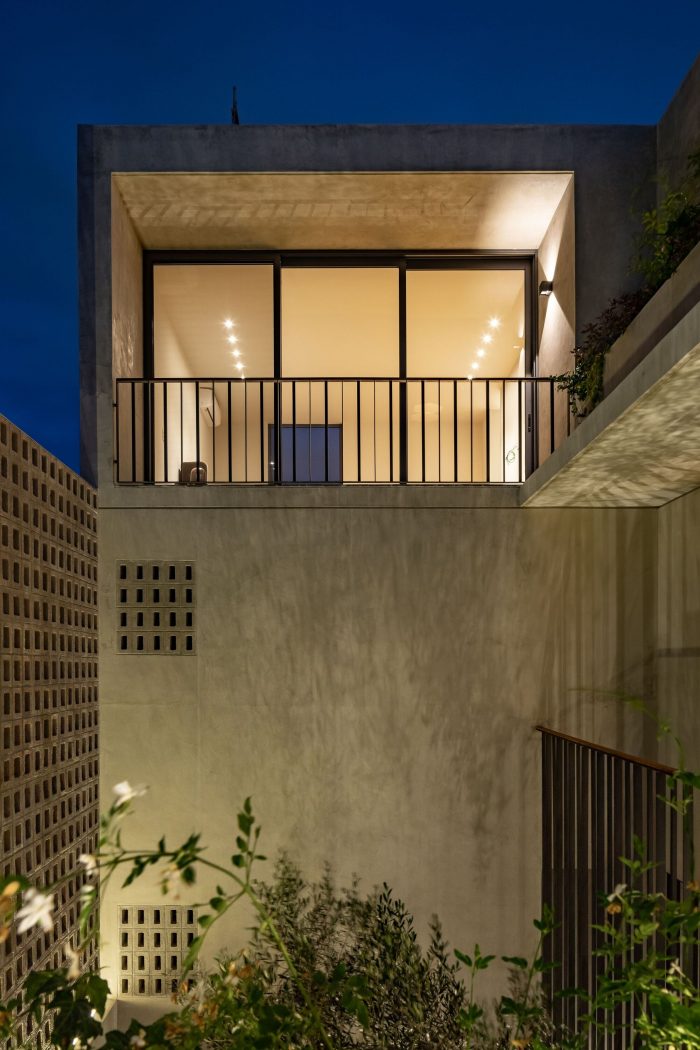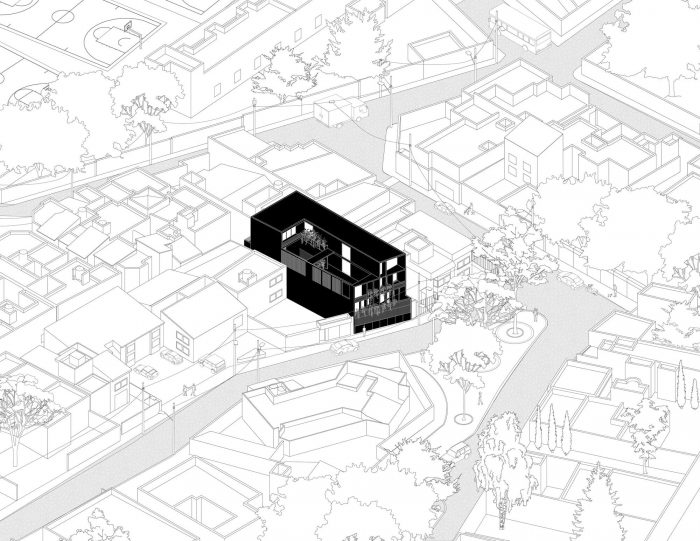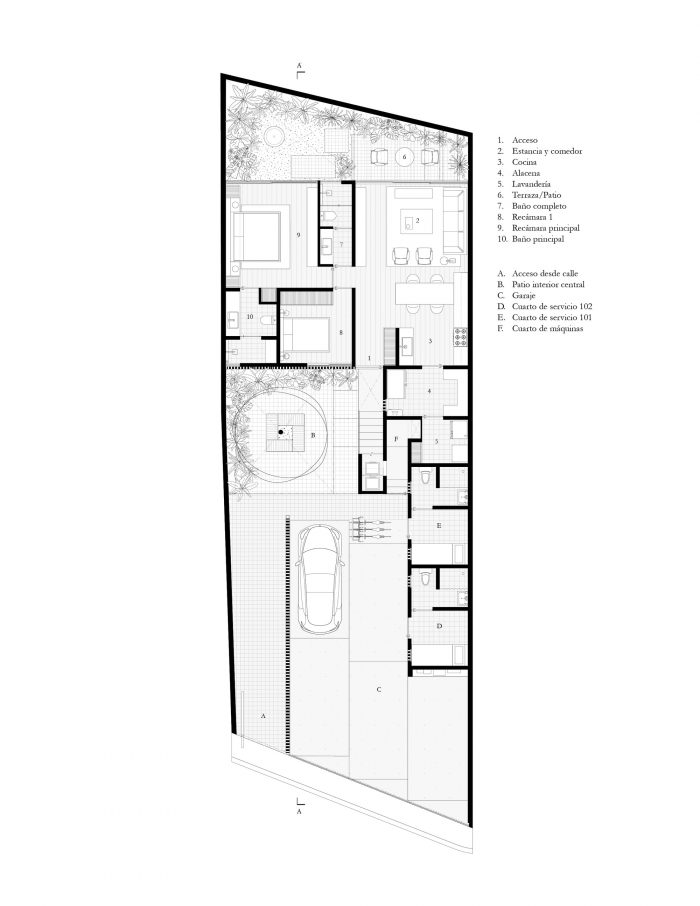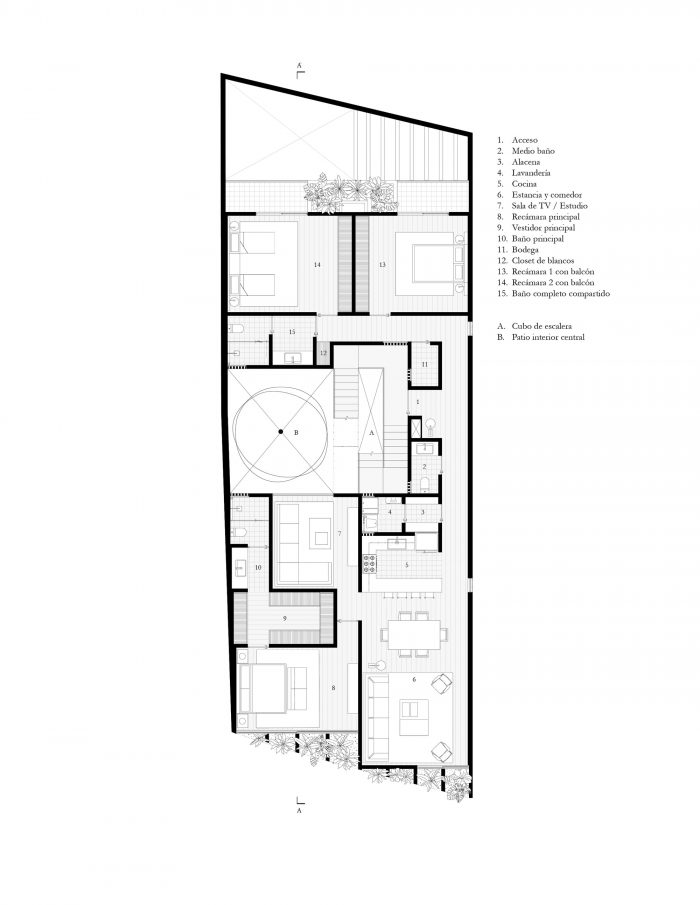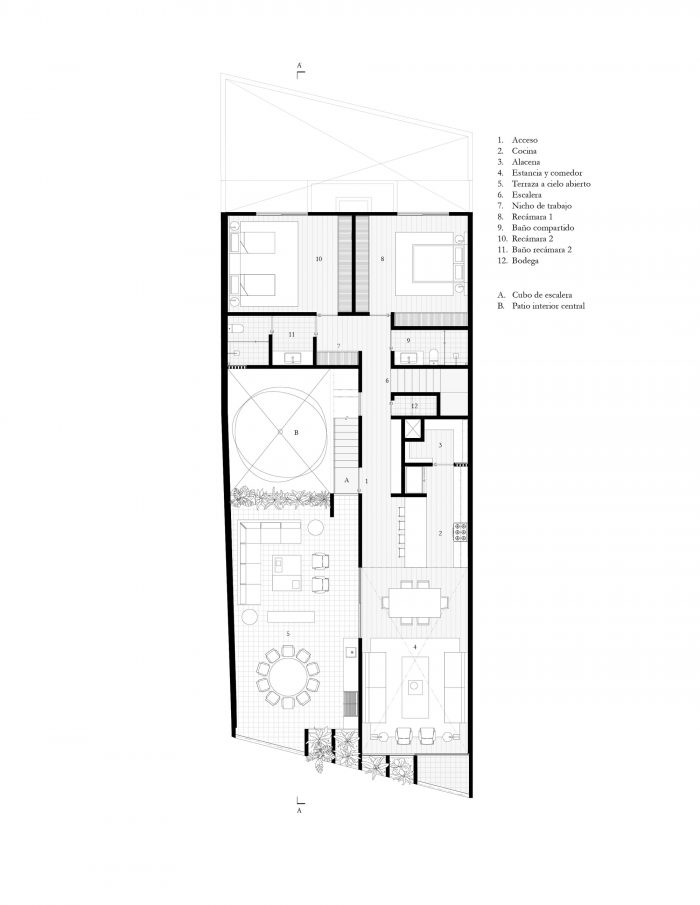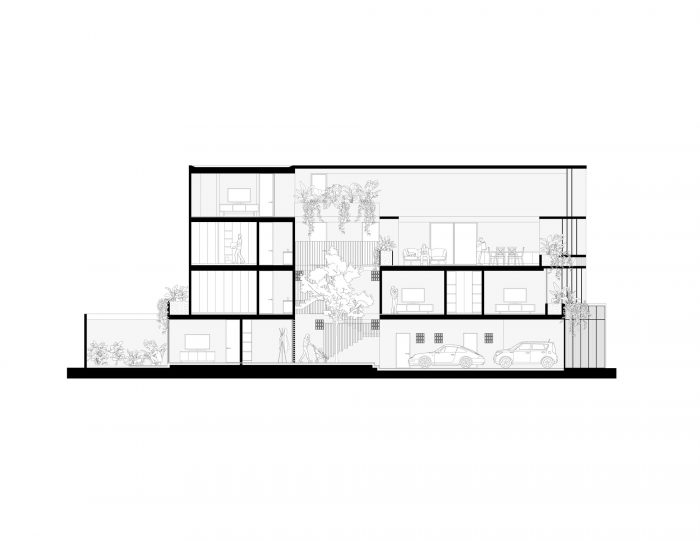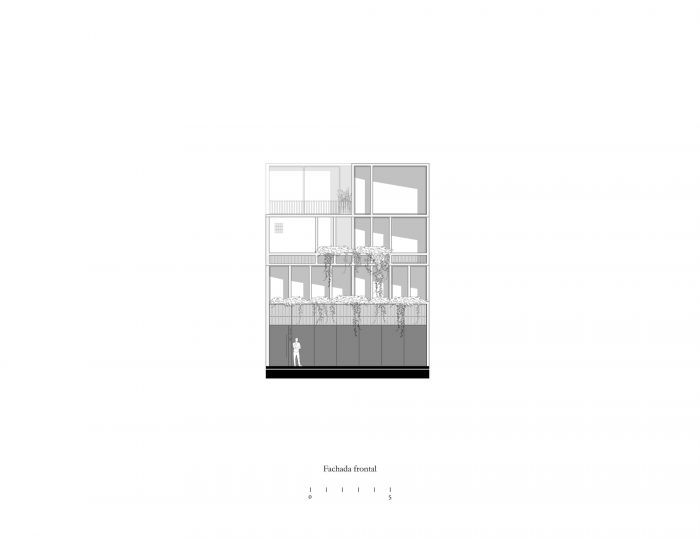多年来,由于对生活空间的需求,墨西哥城市尝试了城市和法规的变化–有时是无计划的–在市中心的社区和郊区的外部之间产生了空隙和密度差异。在此基础上,生活在一个社区,恢复公共空间,使城市重新密集化,一直是我们在处理无节制的城市增长时,要分享的价值和目标。这些概念作为一个起点,在克雷塔罗市中心的这个多居所建筑中成为现实。
Throughout the years, Mexican cities had experimented with urban and regulation changes -sometimes unplanned- due to the demand for living spaces, creating a void and density difference between the downtown neighborhoods and the outside suburbs. On that basis, living in a community and recovering the public space to re-densify the city, have been the values and goals to share from our trench to deal with the uncontrolled urban growth. These concepts served as a starting point to become reality in this multi-dwelling building in the heart of Querétaro.
在城市的历史中心附近,Las Hadas作为第一批公寓建筑出现在一个单家独户密度的社区。该建筑试图促进一个新的公共倡议,以改变该地区的土地使用,为重新密集化和重新激活开辟道路。
Nearby the historic center of the city, Las Hadas emerges as one of the first apartments building placed in a neighborhood with single-family density. The building attempts to promote a new public initiative to change the land use in the area, opening the way to re-densification and reactivation.
在一个狭窄的表面上–原来的房子–场地的长度被利用来设计一个四层的混凝土建筑,由100、200和300平方米的住房单元组成,其中最后一个公寓通过占据一个双层高度的楼层而成为建筑的顶峰,使人们能够看到前面的公园和城市的有趣的景色。
With a narrow surface -where a house used to be -, the length of the site was exploited to design a four-story concrete building, formed by 100, 200, and 300-sqm housing units, where the last apartment crowns the building by occupying a double-height story, allowing interesting views towards the front park and the city.
该建筑与它的建筑和社会经济环境融为一体,选择了一种空间分布,以其有节奏的、有逻辑的和简单的建筑而脱颖而出,这将允许一个具有成本效益的建筑,在空间上具有丰富的可能性。
The building blends into its built and socioeconomic environment, by choosing a spatial distribution that stands out for its rhythmic, logical, and simple architecture, that would allow for a cost-efficient building, rich in atmospheric possibilities of space.
拉斯哈达斯倾向于开放和宽阔的内部空间,同时不影响每个居民的隐私,在较低的楼层使用手工混凝土格子,并在主要的外墙上整合露台和花盆,作为街道和住宅之间的过滤器。
Las Hadas favors open and wide interior spaces, without affecting the privacy of each one of the inhabitants, by using artisanal-concrete lattices on lower levels and the integration of terraces and planters on the main’s façade that works as a filter between the street and the dwellings.
材料调色板是由中性和现代元素定义的,裸露的混凝土是建筑语言的主角,选择它是因为它的耐久性和永恒的外观,它的绿色铜锈使建筑可以适当地老化。这块灰色的画布被木材和钢铁的微妙点缀所补充,同时与树木和花园的郁郁葱葱形成对比。
The material palette was defined by neutral and contemporary elements, the exposed concrete a protagonist of the building’s language, chosen for its durability and timeless appearance whose green patina allows the building to age properly. This gray canvas is complemented by subtle accents of wood and steel while contrasting with the lush greenery from the trees and gardens.
每个公寓的布局都是围绕着中央天井展开的,它最大限度地增加了日光、通风和通道与3个住房单元之间的交流。这个公共区域种植了一棵橄榄树,以庆祝该物业和社区的新生命。
Each apartment’s layout is developed around the central patio, which maximizes daylight, ventilation, and communication between the access and the 3 housing units. This common area houses an olive tree that was planted in celebration of a new life for the property and the neighborhood.
该项目的一个特点是每个公寓的独特设计和身份,避免了复制粘贴的平面图。这一特点通过私人和公共设施的整合得到改善,突出了共享生活系统的好处,展示了城市密度和土地使用问题的设计替代方案。
One particularity of the project is the unique design and identity of each apartment, avoiding a copy-pasted floor plan. This characteristic is improved by the integration of private and public amenities that highlights the benefits of a shared-living system, showcasing a design alternative to urban density and land use issues.
Architects: REIMS 502
Area : 8073 ft²
Year : 2020
Photographs :Onnis Luque, Ariadna Polo
Manufacturers : AutoDesk, Cemex, Adobe Systems Incorporated, Interceramic, Novaceramic
Lead Architect : Eduardo Reims
Design : Miguel Escamilla, Andrea Maldonado, Andrea Leiva, Daniela Ríos
Contractor : Ramón Campillo
Structure : Andrés Casal
City : Santiago de Querétaro
Country : Mexico

